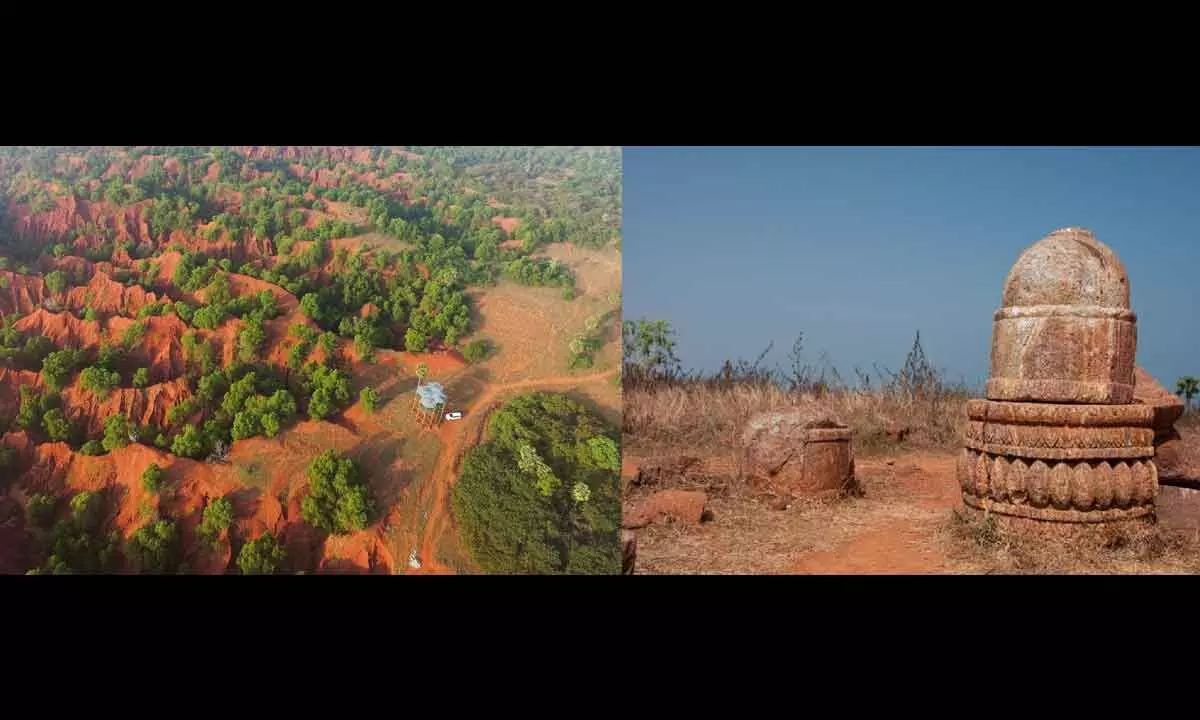Vizag’s heritage sites cry out for help
Activists demand timely action, UNESCO recognition
image for illustrative purpose

♦ Red sand hills of Vizag being encroached by land mafia and authorities
♦ Buddhist site lands also being targeted
♦ Tourists endangering natural arch formation at Thotlakonda
Visakhapatnam: Heritage tourism, an off-repeated thrust area to boost revenue and job opportunities to locals, has remained a pipe dream with the powers-that-be failing to improve sustainable tourist-friendly infrastructure and preserve archaeologically-important and sensitive sites/structures in Visakhapatnam and its neighbourhood.
Though at all the travel marts, investor conclaves and roadshows, it is said that a Buddhist circuit will be developed connecting the famous Buddhist sites in Andhra Pradesh, which are in a dilapidated condition, there is a lot to be done on this front.
Erra Matti Dibbalu (EMD) popularly known as red sand hills of Visakhapatnam and located near 17th century Dutch township of Bheemunipatnam, believed to have formed several thousand years ago with the mixture of sand, silt and clay with oxidation imparting a unique red colour. EMD is hitting the headlines several times for allegedly being under encroachment by the land mafia as well as the authorities.
The precious lands on which the Buddhist sites are located, according to conservation activists, are also being eyed by the land sharks as well as the authorities against whom several complaints are being lodged at various levels.
In a recent social media posting, K Vijay Mohan, president, Tours and Travel Association of Andhra (TTAA) and member, Visakhapatnam Airport Advisory Committee, sought support for saving a natural arch formation at Thotlakonda. The arch is under threat with the tourists thronging the spot, climbing over it to click selfies, video clippings and take pre-wedding shoots with the blue waters of the Bay of Bengal as the backdrop.
Consequently, the rare geological formation has become fragile and on the verge of collapse, he told Bizz Buzz and sought signage on the geological significance of the arch and steps to restrict visitors.
In another development, noted social activist and former IAS officer, EAS Sarma wrote a letter to Chief Minister YS Jagan Mohan Reddy seeking his intervention to protect the archaeologically important sites.
“AP is fortunate to have a unique string of ancient Buddhist archaeological sites along its long coastline from Salihundam in the Srikakulam district up to Amaravati in the Palnadu district. The entire stretch has such rich heritage value that it should not only be carefully and professionally conserved but also sponsored as a world heritage stretch for recognition by the global community of archaeologists and by UNESCO.”
He pointed out that unfortunately, the State government has fallen prey to the pressure of real estate agents and is taking steps that not only divert areas around those sites having potential archaeological evidence for construction activity but also permanently destroy their heritage value. It is sad for the people of the State to witness such callousness on the part of the government, while its counterpart in the adjacent Telugu State is proudly protecting its own archaeological sites and has been successful in securing recognition for them from UNESCO.
“Ancient archaeological sites constitute the heritage of the people and no government has the right to treat them as private property to be disposed of at its will and pleasure. Such heritage sites belong to the present and future generations. In addition to the ancient Buddhist sites of AP, there are several other geological features, and religious structures in the State, which have immense heritage value, and deserve similar protection and global recognition.”
Sarma said either those who manage them are professionally not competent enough to be able to appreciate their value or are in outright connivance with real estate developers, as evident from the way they are subject to neglect and damage and observed that the role of the government in protecting the heritage sites is that of a public trustee and any failure to do so would constitute an outright breach of such public trust.

